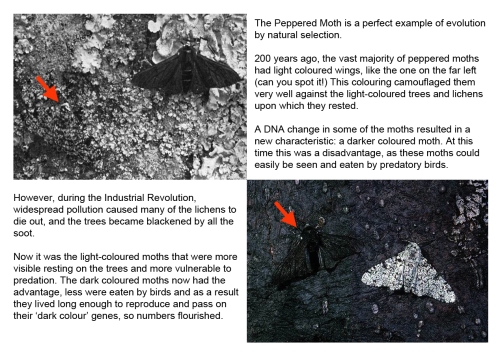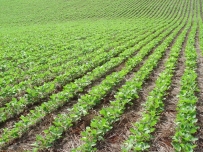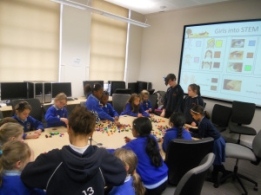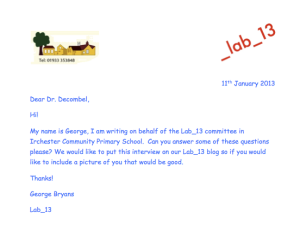
(L-R) Morgan, Lara and Brooke, holding the helical DNA model we are all so familiar with
Our ‘Ask The Scientist’ series continues with another question from the students of Irchester Community Primary School, Northants.
Last week we tackled an excellent question from Morgan on why we all have different DNA.
This week our question comes from Brooke, and it’s another cracker!
Why is DNA in a double helix?
– Brooke, aged 10
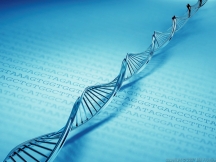
The DNA double helix – but why?
Has it ever occurred to you why DNA is in a double helix? Nope? Me neither. It is one of those things we have always taken for granted, we don’t question it, it just IS. Which is why it sometimes takes a young and questioning mind to bring such an oversight to our attention. So we put our heads together here at PlayDNA and had a good think.
We decided there are a couple of different ways we could approach Brooke’s question.
We could look at it from a chemistry perspective and ask how, chemically, the helix is formed and what chemical or physical forces cause it to take this shape.
Or, we could look at it from a biological perspective and ask why, evolutionarily, it was this particular structure that we ended up with.
We’ll take a look at each in turn, but before we get stuck in, let’s take a moment to remind ourselves what DNA actually is.
What is DNA?
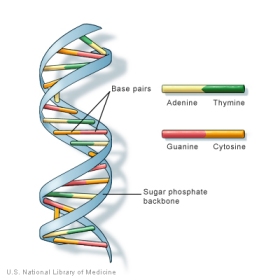
DNA is organised as two long strands of bases which twist around one another to form a double helix. DNA bases pair up with each other, A always with T and C always with G, to form units called base pairs. This is all held together by a sugar-phosphate backbone.
DNA, which stands for deoxyribonucleic acid, is the complex chemical that carries our genetic information. It is a bit like an instruction manual for building the body and keeping it healthy. We keep an entire copy of our DNA code (called our genome) in almost every cell in our body (wow!).
The information, or blueprint, for building a human being like you or me is stored in our DNA as a code made up of four chemical bases: adenine (A), guanine (G), cytosine (C) and thymine (T). These bases are joined together to form long strands, which wrap around one another to form the helix shape we are so familiar with (a bit like a twisted ladder). The human genome consists of around 3 billion pairs of these bases!
Essentially, it is the order in which these bases are organised in our DNA that tells our cells what to do.
The chemistry of the DNA double helix
The basic chemical principle behind why DNA forms a double helix is actually relatively straightforward. As we can see from the diagram above, DNA is essentially made up of three parts: sugar, phosphate and bases. It is the way in which these different molecules react to water that is key to the helical shape.
 Let’s look at our sugar molecule first. We all know that to sweeten our tea or our fizzy pop, sugar has to dissolve in water. When something is able to dissolve in water, it is called ‘water-soluble’ or ‘hydrophilic’.
Let’s look at our sugar molecule first. We all know that to sweeten our tea or our fizzy pop, sugar has to dissolve in water. When something is able to dissolve in water, it is called ‘water-soluble’ or ‘hydrophilic’.
Next comes the phosphate. You might not have heard of phosphates before, but they are really very important!
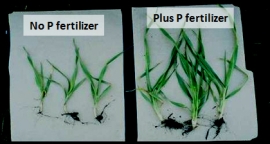
Phosphate is a major nutrient required for plant growth and is a common addition to plant fertilisers (have a look at the bags of compost next time you’re at the garden centre). See what a difference it can make to how well these plants grow!
Phosphates are involved in virtually every cellular reaction in our bodies and are key building blocks for many cellular compounds (including DNA of course!) They are absolutely essential to human, plant and animal life.
Just like the sugar, phosphates are able to easily dissolve in water too.
Finally lets consider the bases. You might have guessed by now, the bases are the opposite of the sugar and the phosphate – they hate water! They are ‘hydrophobic’ and do not dissolve in water.

Bases hate water too!
So what happens to the bases when you put them in water? Something very similar to what happens when you mix oil and water – they pool together and don’t blend with the water at all. But most of the space in our cells is filled with water, so how do these ‘hydrophobic’ bases exist in our cells?
Well, once they are attached to a sugar and a phosphate (to form what is known as a nucleotide) they arrange themselves in such a way as to be as far away from the water as possible. Where is this? Why in the centre of the molecule of course! The water-hating bases stack themselves in the middle of the molecule while the water-loving sugar and phosphate backbone sits on the outside.
But there is another problem.
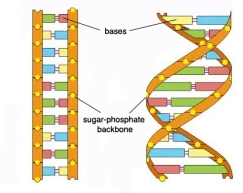
The DNA strands arrange themselves so the water-hating bases are tucked away safely in the centre of the molecule and as far away from the surrounding water as possible!
If the bases just stack themselves (like a ladder) this still leaves space around the bases through which water can sneak in – and the bases don’t like that! They naturally form a position that keeps them all as far from the water as possible, just like the way oil will clump together on top of water. The most efficient position the molecule can form to do this is – you guessed it – a helix, as the ‘twist’ in the molecule closes up and minimises those gaps through the middle.
So that is why, chemically, DNA forms a double helix. It’s all simply down to the way the molecule interacts with water.
But there is another, less direct way to look at this question. A biologist (and we are all biologists here at PlayDNA!) would perhaps ask why it is this particular structure that has endured over any other type of molecule. Why has life evolved to use bases arranged in a double strand to carry our genetic code and not some other formation? Why a combination of water soluble and insoluble chemicals?
In short, why is the DNA double helix so perfect for carrying our genetic information?
The biology of the DNA double helix
As we’ve seen above, when we refer to DNA as being ‘double-stranded’, we mean that it consists of two strands of DNA bound together. However these strands are not permanently bound to one another. They can be separated for a couple of reasons:
- So that the cell can ‘read’ the instructions contained within the DNA and tell it what to do.
- So that the strands can be used as a template to make a whole new copy of the DNA code for a new cell – a process called ‘DNA replication’.
Unbelievably, each and every one of us developed from just a single cell.

We all start out life as just a single cell complete with the original DNA copy we got from our mum & dad! As we develop, our cells duplicate, and each new cell needs its own copy of DNA to tell it what to do. That’s a LOT of copying!
x
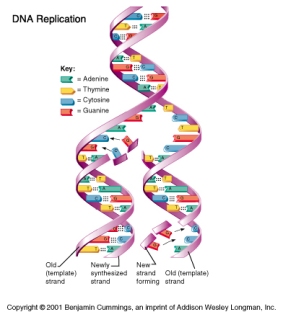
To make new copies of your DNA code, the DNA-helix is first “unzipped”. Each half will then be the template for a new, complementary strand. Biological machines inside the cell put the new bases onto the split molecule and also “proof-read” the result to correct any mistakes. The final result is two exact copies of the original DNA molecule!
From that single cell, an individual grows to around 100 trillion cells (!), and almost every one of these cells contains an entire copy our DNA (remember there are over 3 billion bases in just one copy).
That is a lot of DNA for our bodies to read and copy! It is really important then that we keep any errors in this copying to a minimum, as at this rate errors can build up quickly, and errors in our DNA code – or mutations as they are also known – are usually a bad thing.
x
In this regard, being double-stranded helps in at least two ways.
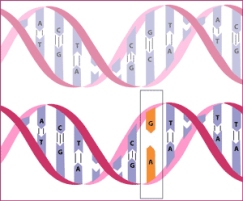
Oops, an A base has been accidentally put in the new strand of DNA instead of a C base! The double stranded nature of DNA keeps these errors at very low levels, but they do still happen in our DNA all the time. Luckily most of these mutations are harmless, as they don’t occur in the important areas of our DNA.
Firstly, as we know, it is the chemical bases A, T, C and G that carry the DNA code. If the DNA molecule were single stranded, this important part of the molecule would be exposed to the cellular environment, which would mean a higher likelihood that it could get mutated by the numerous chemicals there. In our double stranded model however, the precious bases are kept locked away within the complex, keeping them safe from the harsh external environment.
Secondly, as we saw earlier, the two DNA strands that form the helix are essentially complementary copies of one another. An A base on one strand always pairs with a T base on the other, and likewise C always pairs with G. Having two complementary strands facing each other means that our cells always have a back up; a way to check that our DNA has been copied correctly. It allows for a level of ‘proof- reading’ of the DNA sequence so some mutations can be corrected, or at least limited.
In summary, the double-stranded DNA helix is a winning combination for packaging genetic material for the long term. It keeps our DNA code as faithful to the original as possible with its ability to be copied precisely and without errors, and offers some protection against mutation.
It is perhaps no surprise then that almost all organisms – plants, animals, yeast and bacteria – carry their genetic information encapsulated as DNA: it is the perfect molecule for the job!
s
If you have anything to add, or any more questions on this topic, please do feel free to comment below!
With thanks to Dr. Rama Balakrishnan, Stanford University (http://genetics.thetech.org/ask/ask109) and Jeremy http://medicguide.blogspot.co.uk/2008/07/why-is-dna-double-stranded-but-rna.html)

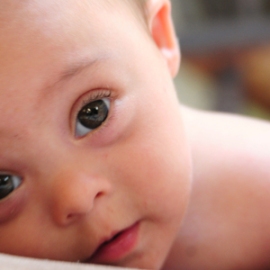 It is true that there are certain genetic disorders that it’s relatively easy to spot if a person has. Down’s syndrome is one such condition. People with Down’s syndrome tend to share a number of physical characteristics, although it’s important to recognise that not every individual with the syndrome will have them all.
It is true that there are certain genetic disorders that it’s relatively easy to spot if a person has. Down’s syndrome is one such condition. People with Down’s syndrome tend to share a number of physical characteristics, although it’s important to recognise that not every individual with the syndrome will have them all.

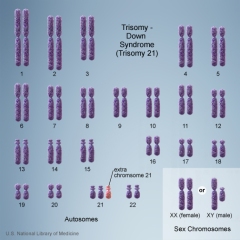



 Let’s look at our
Let’s look at our 






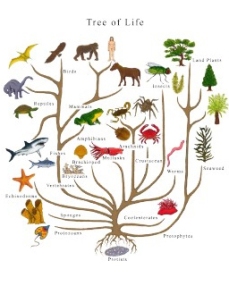

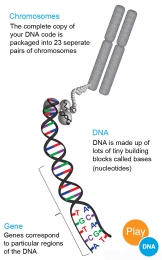 It is actually the genes in DNA that result in the different characteristics we see in all species. A gene is simply a short section of DNA that tells our cells what to do. If you think of your DNA as a recipe book, the genes are the individual recipes. Each of us has the same set of genes – about 20,000 in all. The differences between people come from slight variations in these genes.
It is actually the genes in DNA that result in the different characteristics we see in all species. A gene is simply a short section of DNA that tells our cells what to do. If you think of your DNA as a recipe book, the genes are the individual recipes. Each of us has the same set of genes – about 20,000 in all. The differences between people come from slight variations in these genes.